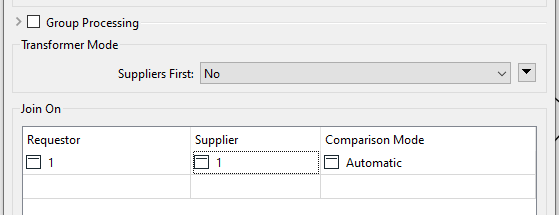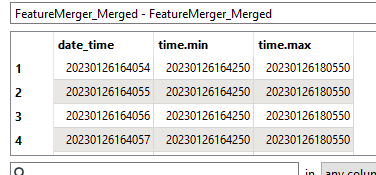I have a StatisticsCalculator that determines the min and max time values in a data set. If I feed the time.min and time.max into a TestFilter to filter out values from another table which are outside of the time.min and time.max range, the filter doesn't filter properly but if I use the actual time value is does. What do I need to do to get the TestFilter to work with the FeatureAttribute? 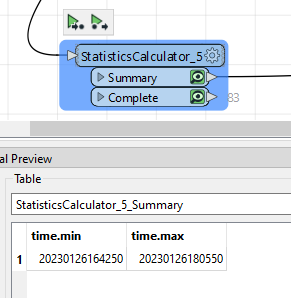
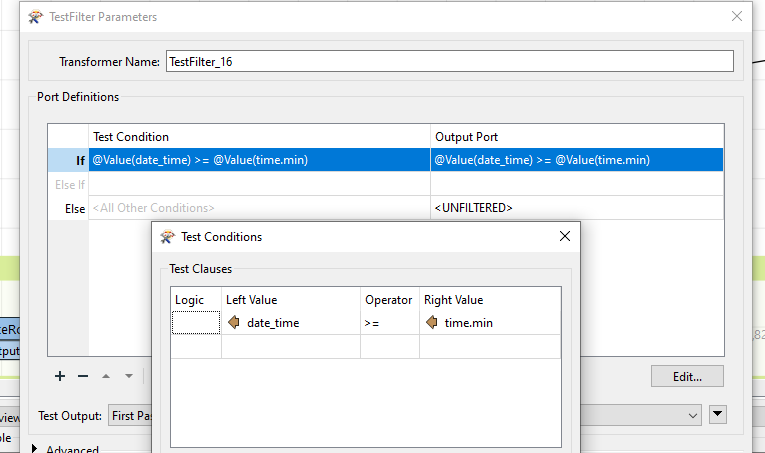
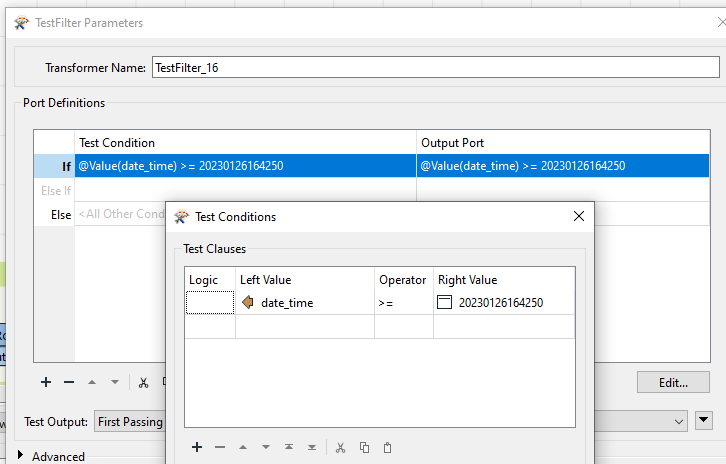
Question







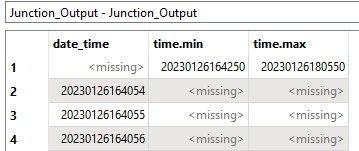 The remaining features do not have those attributes.
The remaining features do not have those attributes.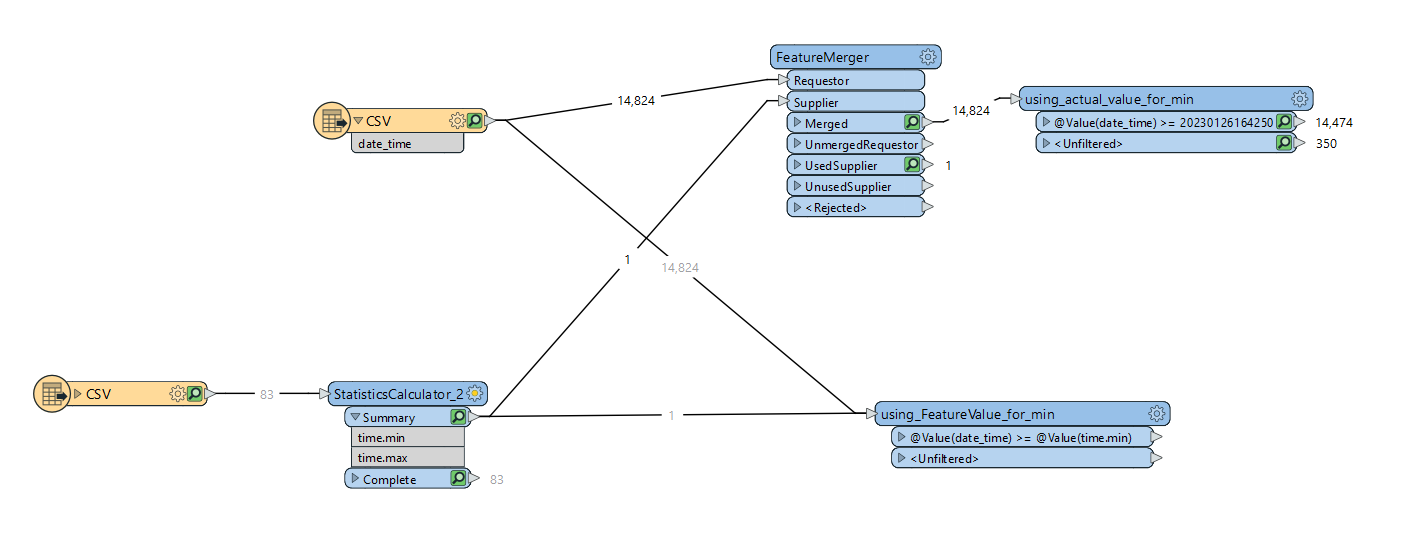 Because you're only passing in one value to the supplier and you want that on all requestors, set the join to 1:1.
Because you're only passing in one value to the supplier and you want that on all requestors, set the join to 1:1.